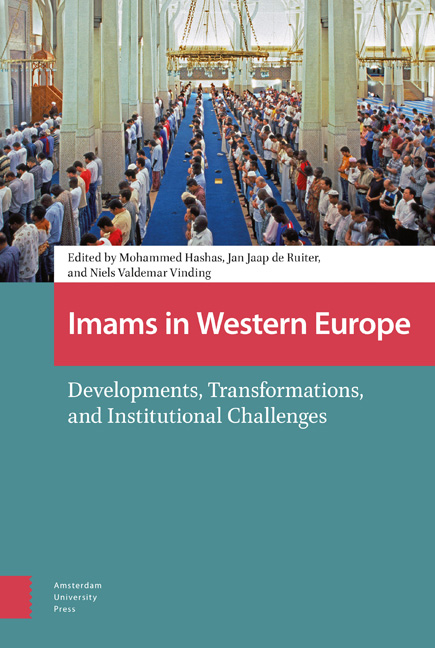Preface
Published online by Cambridge University Press: 06 January 2021
Summary
This fascinating book on imams in Western Europe is well timed to respond to the European discourse on Islam and Muslims, coming at a time of remarkable developments in the imam as a concept, as a religious institution, and as an authority for the Muslims of Western Europe.
What are the origins of the concept of the ‘imam’, what lies behind it, and what are the historical antecedents that provide context for its current use? The present book provides pertinent answers to such questions; my short remarks here shall serve only to suggest the broadest possible framing of the many important themes, perspectives, and research on imams in Western Europe to be found within the following pages. By way of introduction to the multifaceted understandings and multiple usages of the concept of the imam, I trace three increasingly common and popular perspectives on the position of the imam. These are: first, the imam as the prayer leader; second, the imam as a religious authority; and, third, the imam – still almost exclusively a male role – as a kind of priest; the three perspectives lead to some of the complications and confusions that we are dealing with in the Western European context.
The imam as prayer leader
While the word ‘imam’ has its origins in the Quran – like many of the Islamic terms that have a social life and context in Western Europe – it did not originally have the technical sense that was later built into it. In the Quran, ‘imam’ means someone or something that is the moral model or guide for a community, which is held together by the shared ideal morality demonstrated by the imam. When leading his people into hellfire, for example, the Pharaoh is described as an ‘imam’ (Quran 28:41). The book of Moses and the record of each person's deeds are also described as ‘imams’, in that they are models, examples, or prescriptions of proper behaviour (Quran 46:12 and 36:12, respectively). Equally, Abraham (Quran 2:124) is described as an example for all people, and therefore an ‘imam’. It is only later that the word ‘imam’ began to take on a variety of more specific meanings.
- Type
- Chapter
- Information
- Imams in Western EuropeDevelopments, Transformations, and Institutional Challenges, pp. 11 - 16Publisher: Amsterdam University PressPrint publication year: 2018



